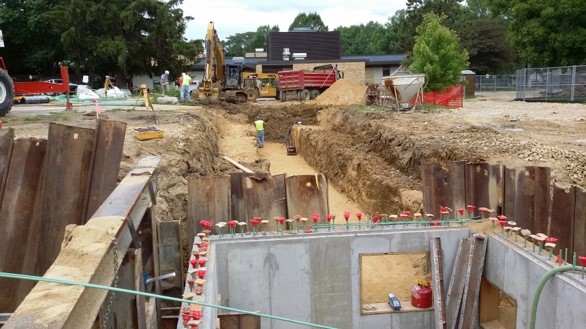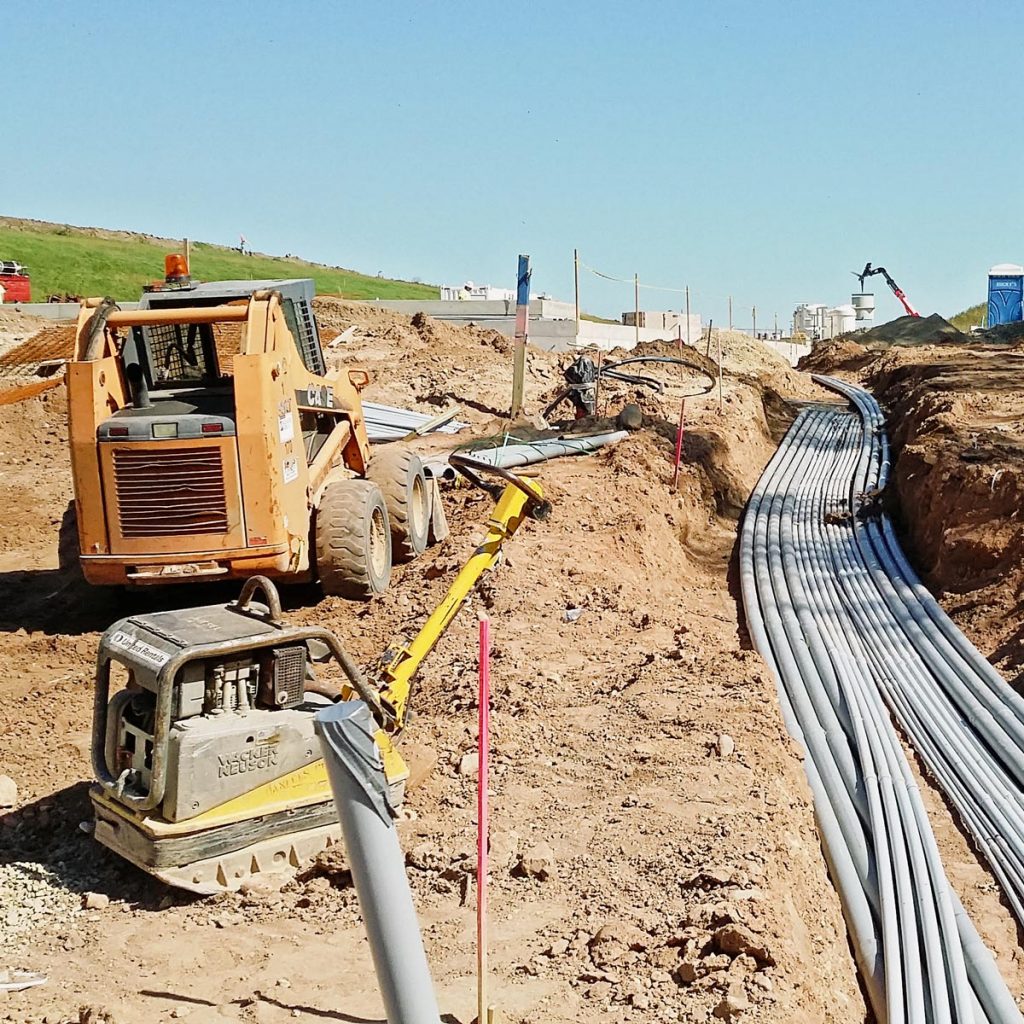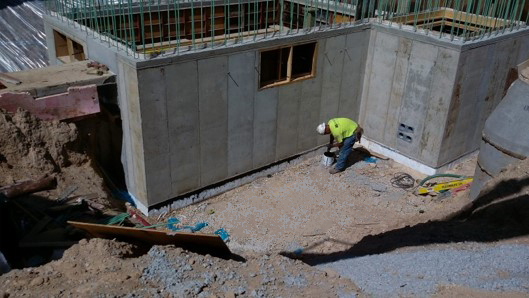introduction
Spring is here and many new projects are starting, which means an increase in excavation and trenching work. Whether you are a Project Manager / Superintendent or an owner planning your next project, its important to ensure steps have been taken to prioritize safety in this stage of your project. Groundwork is largely considered to be the riskiest step in the construction process and can cause major delays if not handled properly.
At Daniels, our crews have the ability to self-perfom earth retention, site utilities and excavation, and Safety Manager Logan Szopinski has put together our tips and common practices to keep everyone safe on the job this spring.

pre-planning
Trenching and excavation can be a complicated process when navigating existing utilities, public/emergency access, and site conditions. The first and most crucial step in this process is pre-planning. There are a few things project management and superintendents can do to make this easier, including:
- Get involved during bidding. If we can head the problems off when we’re bidding the job, allocate the dollars, and ensure workers safety, everyone is happy.
- Walk the jobsite. Aerial maps are great, however getting boots on the ground, looking for signs of utilities, access points to the building or other potential issues gives you time to get a head of the game and start brainstorming solutions.
- Educate beforehand. Get people in the classroom and educate them on real world examples, solutions and standards of excavating and trenching.
- Plan for the worst. Produce emergency management tools such utility providers phone numbers, identify shut off locations and educate employees on what to do and where to go in the event of a utility strike.

public vs. private utilites
After we’re through pre-planning and getting ready to start digging, the next step is to make sure that utilities are identified to the best of our ability. This means doing public and private utilities where it’s needed.
How do you know what type of utility it is?
The difference between the two is public utilities might be seeing a gas meter on the side of a building that is marked in a call to diggers hotline all the way from the road to the meter itself. Private locates may be the same utility like another gas line running from the main building to a heated storage shed but because the service is not running directly from the roadway it is considered private.

take uncertainty out of the equation
Once buckets go in the ground, it’s time to put all that pre-planning into play by sloping, benching, or shielding that excavation while employees are working in it. There are a lot of numbers that are easy to forget over time especially if you’re not performing the work frequently. We created a simple cheat sheet called, “Excavation by the Numbers” that we put in our earth moving equipment that lists out the numbers 1-30 with what standards align with that number like,
- Competent person must be on the jobsite.
- Spoil piles must be 2’ away from the excavation or trench.
The sheets are meant to give everyone who may hop into that piece of equipment access to the information quickly to take the uncertainty out of the equation. Sometimes people might not want to ask the question and this gives them the ability to find the answers quickly without having to spend extra time searching. Regular safety trainings are important, and the knowledge is strengthened even further with convenient refreshers like these.
additional considerations
When there are open excavations, continue to think about and monitor issues, like:
- Are we protecting the public? Commonly referred to as attractive nuisance. Are we as a contractor keeping people out of our construction site so they can’t come in and hurt themselves?
- Are inspections being done? Springtime usually means rain which can create fissures in the side of the excavation and cause a potential trench/excavation collapse.
Excavations can be hazardous but if we pre-plan, have the correct systems in place, and adapt accordingly everything can move forward smoothly.